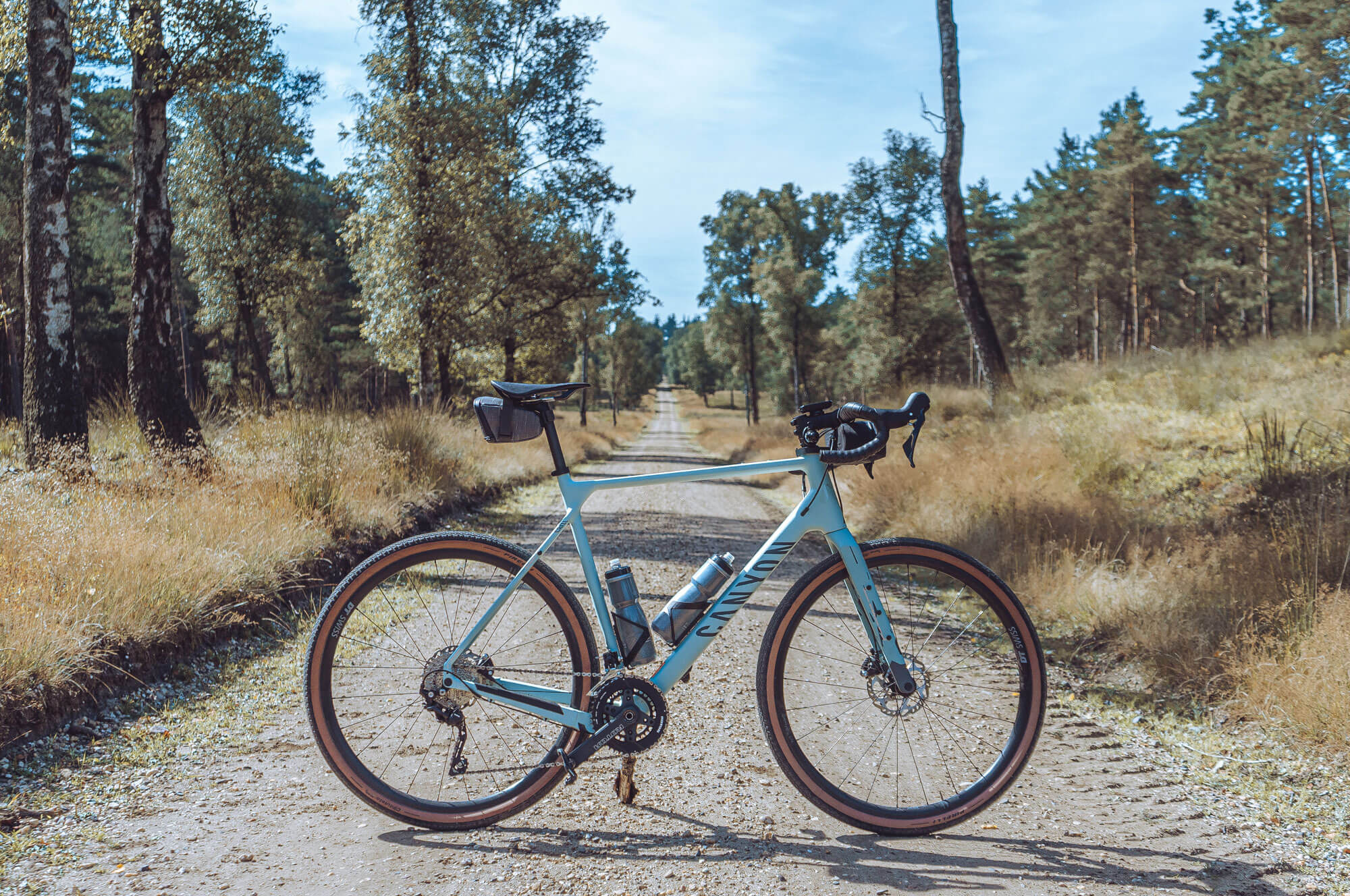Nothing has shaken the bicycle market in recent years like gravel bikes. Some cyclists love them, some consider gravel bikes to be a marketing invention. How is it really? Will gravel bikes pass as quickly as the fatbike fashion did? In the article you will find a few links to sample gravel bikes from various shelves.
Gravel Bikes What Are They ?
A gravel bike is a fast bike with a drop bar that allows you to ride on gravel, dirt or forest roads.

Gravel Bike Frame Geometry
Although at first glance a gravel bike resembles a road bike, it differs from it in some aspects. We have here an elongated rear triangle so that a taller tire can fit, and the bike is more stable in the field.
Gravel often has a taller headtube for a more comfortable position, although there is a large group of gravel bikes geared towards a sportier riding position.
However, there is no problem finding a gravel bike that will allow you to travel hundreds of kilometers without back pain.
Differences also appear in frame angles, wheelbase and other parameters.
Gravel Bike Frame Material
If you are not limited by the budget, when buying a gravel bike you will have a choice of four groups of materials from which the frame is made.
Of course, there is also the quality of this material, precision of workmanship, weight. Is any choice clearly the best? It all depends on the expectations we set for the bike and our finances.
You can choose from:
Aluminum:
The most popular material for bicycle frames. It is relatively light and durable. It is said that it dampens vibrations less, but I wouldn’t demonize it so much.
Carbon:
Carbon fiber – an increasingly cheaper material for building frames, but still much more expensive than aluminum.
Currently, the production technology is refined, there is no point in worrying about its durability.
It absorbs vibrations better, which is why often at least a carbon fork and sometimes a seat post are added to the aluminum frame.
Steel:
It is experiencing a small renaissance among lovers of long-distance tourism.
Titanium:
A less common material in frames due to its price (titanium frame can be more expensive than carbon frame). Titanium is as strong and resilient as steel, yet much lighter.
Gravel Bike Tire Width and Diameter
Gravel manufacturers most often focus on the wheel diameter of 28 inches known from road and cross-country bikes.
Tires usually start with a width of 35 mm, through the popular and most universal 40-42 mm, up to a width of 50 mm (2 inches). But beware – not every gravel bike will allow you to put on such wide tires.
It is worth checking this parameter before buying, if you care about wider tires than the factory ones.
In addition to 28-inch wheels, there are also gravels with 27.5-inch tires, so far associated mainly with MTB bikes.
Tire widths of 2.1 inches are most common on these bikes.
But there is no shortage of models that allow you to mount 2.5-inch or even 3-inch tires! Such bikes are called gravel plus or monstercross.
Tire Tread
When looking for tires for a gravel bike, we can choose the types of treads. Tires can be:
Completely Smooth:
With a fine, densely packed bone (quick on asphalt)
Semi-slick type:
smoother in the middle and with tread blocks on the sides
with typical off-road tread blocks spaced less frequently
Mounting points
An indispensable price of gravel bikes are tourist opportunities or at least most models, because there are also bikes that veer hard towards the sport.
Nevertheless, it is not a problem to find a gravel that will have mounts for water bottle cages (sometimes more than two) and with holes for screwing a rack (or two) and fenders.
Disc brakes
Discs are basically standard on gravel bikes. In cheaper models you will find mechanical brakes, in which a steel cable runs from the lever to the clamp.
Better models are equipped with hydraulic brakes, where brake fluid flows instead of the cable (it gives greater braking power and better modulation, the ability to dose this force).
Road bike handlebar
An indispensable element of a gravel bike is a road bike handlebar and no, a bike with a rigid fork but a straight handlebar is not a gravel! We call such bikes fitness bikes.
Such a handlebar gives you the opportunity to put your hands in several places, which is useful especially on longer routes to rest your hands. In addition, it improves aerodynamics, especially after “going down to the bottom grip”.
Rigid fork
A rigid fork is practically the standard in gravel bikes. It reduces the weight of the bike and increases its efficiency, of course, at the expense of worse damping of unevenness.
Currently, the most popular material from which the forks are made is carbon fiber (in cheaper models, only the legs, in more expensive models – also the steerer tube). There are gravels with a shock absorber, but time will tell if they will stay with us for longer.
Gravel drivetrain
Cranksets with three chainrings are rare in gravel bikes. Most often there are two (e.g. 46/30 or typical road 50/34) or one (often 38 or 40 teeth). Manufacturers still often pack road bike drives into gravel bikes. So we get harder gears that allow you to drive over 30 mph, where lighter gears are forgotten.
Of course, everything depends on the power in the legs and the terrain where we ride, but gravel is not a road bike. After loading the bike with heavier bags and riding on dirt roads, lighter gears than road 34-34 are usually needed. With a less developed leg, even 30-36 will only give a substitute for what mountain or cross bikes offer.
Why Would You Want a Gravel Bike?
Gravel is a compromise and is not suitable for someone who is looking for a strictly road bike, just like it will not replace a mountain bike. However, if you’re looking for an “off-road road bike,” this is the perfect solution.
We get a machine that is not as fast as a road bike, nor will it win against MTB, but for an amateur without great sports ambitions, it will be a great compromise. We get something like SUV in the car market – it’s not a real off-roader, but it’s not a classic station wagon either 😉 . It is a compromise between these worlds.
Where Does The Popularity of Gravel Bicycles Come From?
In my opinion, such a large interest in this segment can be easily explained. Most cyclists are not professional athletes. Most of us have no ambition to become even an amateur cyclist.
The lion’s share of consumers are people using bicycles for recreational purposes. For them, a gravel bike is a reasonable compromise – giving a wider spectrum of possibilities and may be exactly what they needed.
If You still are not convinced about Gravel Bikes and you want a MTB, we have an article about Mountain Bikes here.





